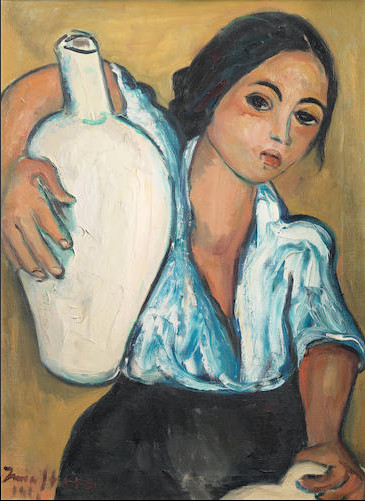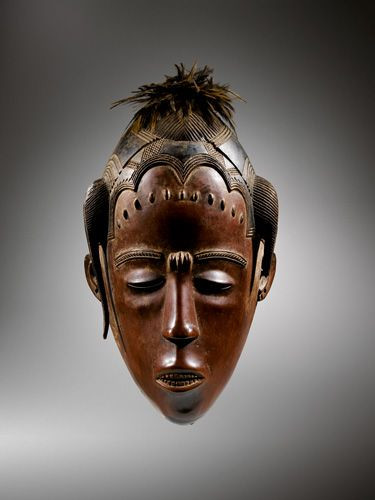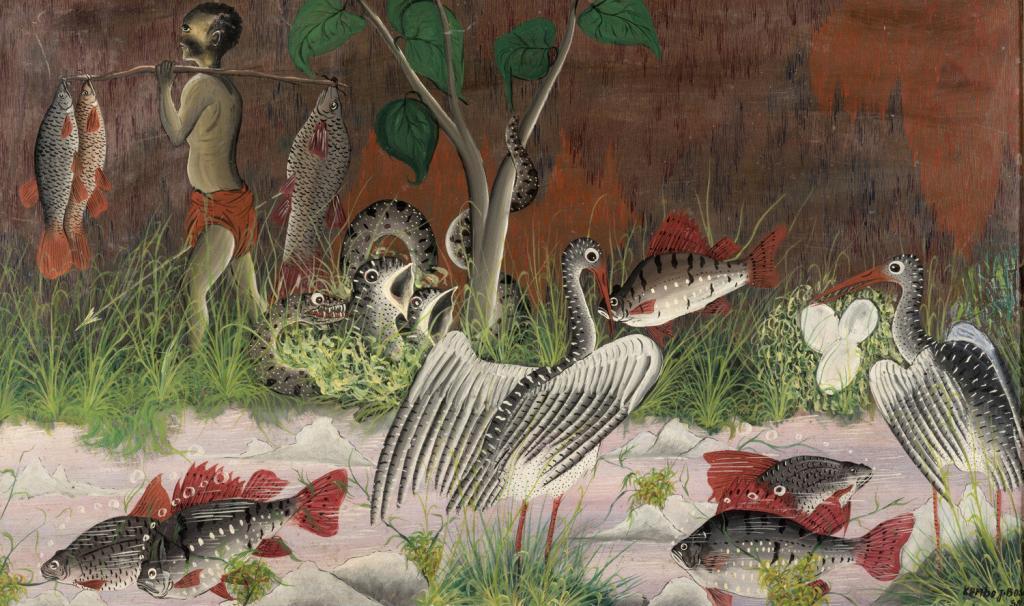Paintings by Ludwig Deutsch at the upcoming 19th century European Impressionist Art auction at Bonhams
On September 26th, a sale of 19th century European, Victorian and British Impressionist Art will be held in Bonhams london. Among the works presented are two works by the French naturalized Austrian Orientalist painter ludwig Deutsch. An opportunity for us to rediscover this artist inspired by his travels in North Africa that have marked his work.
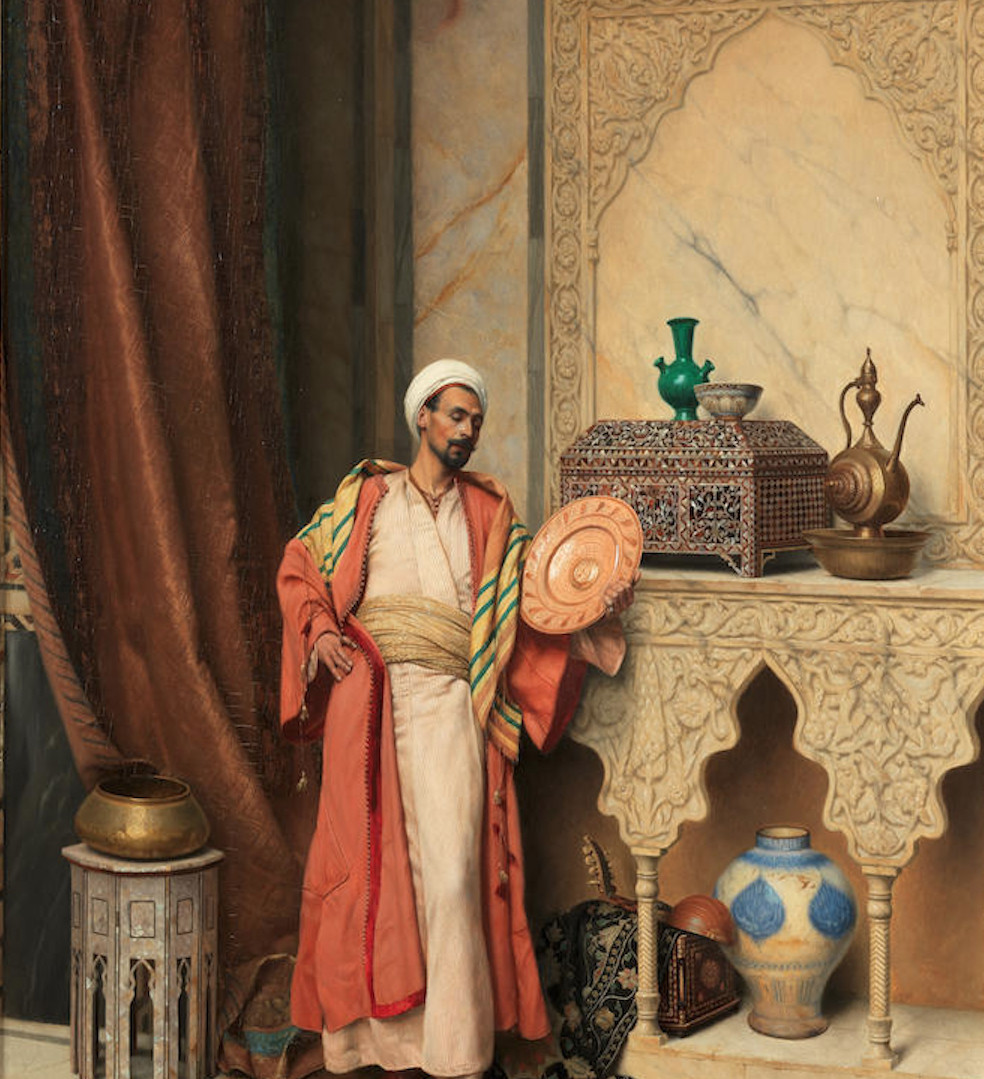
(Austrian, 1855-1935)
The Connoisseur
£ 150,000 – 250,000
€ 170,000 – 280,000
© Bonhams
19th Century European, Victorian & British Impressionist Art
26 Sep 2019, 14:00 BST
London, New Bond Street
Born into a wealthy Jewish family, his father was a money-changer at the Imperial Court. After high school, he entered the Vienna Academy of Fine Arts in 1875. He trained at the Vienna Academy in 1872 but moved to France in 1878, and studied with the history painter Jean-Paul Laurens, to whom he owed his academic style. He specializes in orientalist painting. Deutsch was the leading Orientalist painter of the Austrian school, which also included Rudolf Ernst, Arthur von Ferraris, and Rudolf Weisse.
From 1883 onwards, Deutsch made four trips to Egypt, and the oriental subjects that dominated his work from then on brought him unprecedented praise. The polished surfaces and extremely precise hallucinatory realism of his paintings are based on a vast collection of photographs he assembled in Cairo.
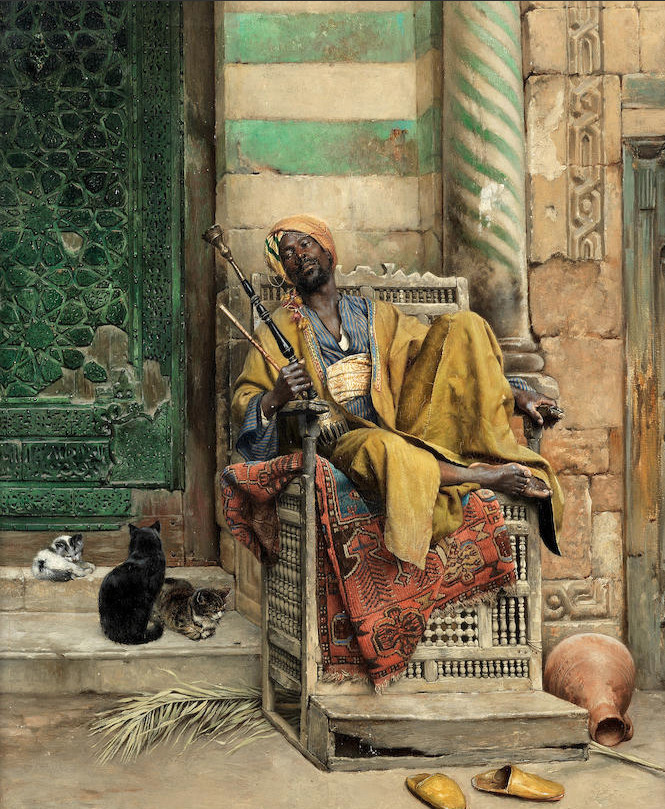
signed and dated ‘L. Deutsch 1884’ (upper right)
oil on panel. 41 x 29.8cm (16 1/8 x 11 3/4in).
£ 120,000 – 180,000, € 130,000 – 200,000
© Bonhams
19th Century European, Victorian & British Impressionist Art, 26 Sep 2019, 14:00 BST London, New Bond Street
In The Goza Smoker,1884, Deutsch turns his ethnographic eye to a familiar and enduring motif in Orientalist art, the Arab smoker in idle repose. Far from a transcript of reality, however, or merely another example of a popular theme, Deutsch’s picture includes details that complicate its meaning and allude to the sophisticated artistry behind its composition.
The man in Deutsch’s painting wears a traditional striped qumbaz beneath a heavier outer robe. To those familiar with Deutsch’s art, the appearance of these specific blue, red, and yellow-gold garments would not have been surprising, as they were repeated often in his oeuvre and may have been drawn from the artist’s own collection of textiles and exotic goods. In his right hand, the man grasps a goza, or pipe, featuring a large brass bowl carved with Islamic designs. Built for portability and meant to be held rather than set upon the ground, this somewhat archaic form of Egyptian hookah is distinguished by a stiff bamboo stem rather than a flexible hose. The direct flow of smoke from bowl to mouth that this construction allows made it a particular favourite among smokers of tombiek, ajamy, and other traditional and fragrant tobaccos such as jurak and zaghloul, as well as among 19th century enthusiasts of hashish and stronger drugs. The man’s posture here is relaxed and informal and his sideways stare is unfocused and blank. Lost in thought – or perhaps in the effects of the unspecified substance that he smokes – Deutsch has created an unlikely protagonist in this otherwise characteristic work, sprawled languidly upon his mashrabiyah, or turned wood, throne.
![Alphonse Etienne Dinet (French, 1861-1929) Rabiâ el Kouloub ou Le Printemps des coeurs, Légendes sahariennes recueillies par Sliman-Ben-Ibrahim, traduites et illustrées par E. Dinet, [Piazza] L'Edition d'art, 1902 £ 130,000 - 150,000 € 140,000 - 170,000 © Bonhams 19th Century European, Victorian & British Impressionist Art 26 Sep 2019, 14:00 BST London, New Bond Street](http://s960436671.onlinehome.fr/wp-content/uploads/2019/08/Alphonse-Dinet-vente-Bonhams-London-Artskop3437.jpg)
(French, 1861-1929)
Rabiâ el Kouloub or Le Printemps des coeurs, Légendes sahariennes collected by Sliman-Ben-Ibrahim, translated and illustrated by E. Dinet,[Piazza] L’Edition d’art, 1902
£ 130,000 – 150,000
€ 140,000 – 170,000
© Bonhams
19th Century European, Victorian & British Impressionist Art
26 Sep 2019, 14:00 BST
London, New Bond Street
The formidable doorway behind the Arab figure – likely the entrance to a private palace rather than a mosque or madrasa, given the man’s apparently inebriated state – offers evidence of Deutsch’s extensive use of well-known pattern books and popular prints. Here the reference may be to the architectural designs of Owen Jones or the numerous portals recorded by the great French artist and scholar Achille Prisse d’Avennes, a favorite resource of Deutsch’s for his art (see The Qanun Player). Deutsch’s eclectic personal library, in fact, is visible throughout his painted scenes. It is testament to his skill as an artist that the results are invariably so seamless and so real.
In 1900, three years after painting The Offering, Deutsch received a gold medal at the Exposition Universelle in Paris, and later the Chevalier de la Légion d’honneur.

Anticipation
signed ‘F. Roybet’ (upper right)
oil on canvas
81.5 x 67cm (32 1/16 x 26 3/8in).
£ 150,000 – 250,000
€ 170,000 – 280,000
© Bonhams
19th Century European, Victorian & British Impressionist Art
26 Sep 2019, 14:00 BST
London, New Bond Street
In The Qanun Player,1903, Ludwig Deutsch creates a work that is both instantly familiar and entirely new. A bearded man, seated cross-legged upon a carpet on the floor, plays the qanun, a traditional stringed instrument indigenous to the Middle East. He is observed by a second Arab figure, leaning against an intricately patterned wall. The room itself is rich in ornamental detail, with colourful inlaid stonework, elaborate wooden carvings, and an enormous mashrabiyyah window, through which the soft glow of sunlight streams. The mood of Deutsch’s picture is soothing and subdued; this is a different kind of Orientalism than what was offered by his peers, one in which drama and eroticism have no place.
The setting of Deutsch’s picture is significant, if not architecturally exact. Though European travellers had provided descriptions of domestic architecture in the Middle East by the early 18th century, serious study of the region’s private buildings did not begin until the work of Napoleon’s Scientific and Artistic Commission in Egypt in 1798, headed by Vivant Denon and Pascal Coste. The official findings of the Commission, called the Description de l’Égypte, were published in Paris between 1809 and 1828 in multiple, lavishly illustrated volumes (Paris: Imprimerie impériale).
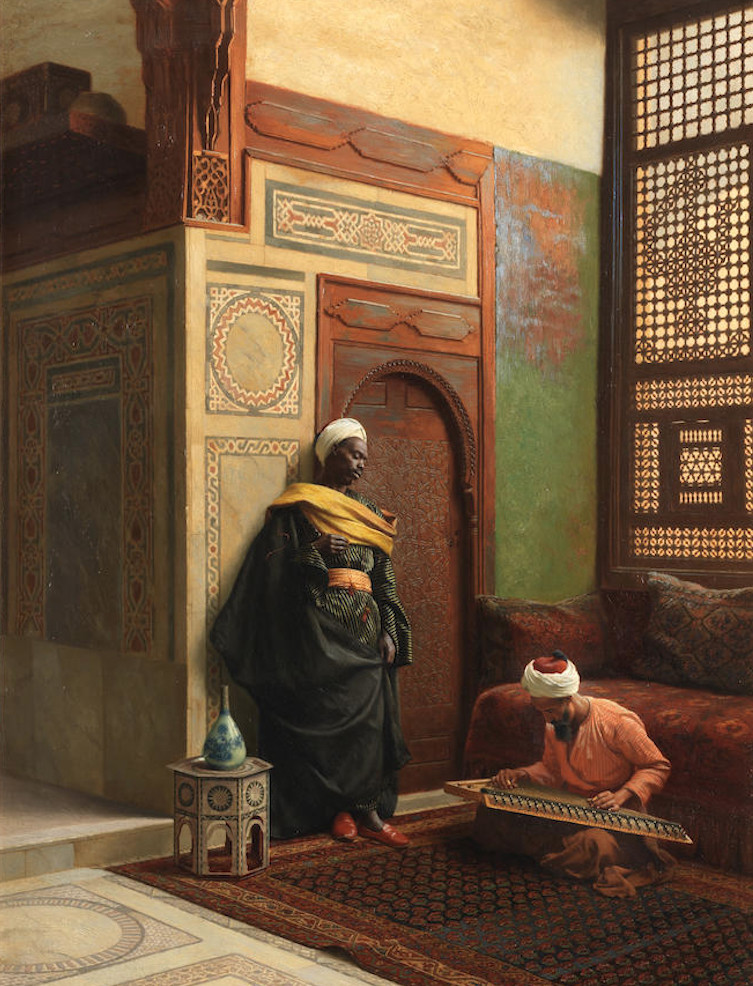
signed, inscribed and dated ‘L. Deutsch PARIS 1903’ (upper left)
oil on panel
77.5 x 53cm (30 1/2 x 20 7/8in).
£ 300,000 – 500,000€, 330,000 – 550,000
© Bonhams
19th Century European, Victorian & British Impressionist Art
26 Sep 2019, 14:00 BST
London, New Bond Street
Orientalist painting is deeply linked to travel. It is true that some artists have not left Europe or the United States, such as Antoine-Jean Gros, nevertheless famous for his “Bonaparte visiting the victims of the plague at Jaffa, March 11, 1799”. However, many have actually travelled to the Maghreb or the Mashreq. This was the case of Eugène Delacroix who went to Morocco and Algiers in 1832, of Alexandre-Gabriel Decamps who travelled to Greece and then to Asia Minor in 1827, of Prosper Marilhat who accompanied a scientific expedition to Greece, Syria, Lebanon, Palestine and Lower and Upper Egypt from 1831 to 1833, or of Théodore Chassériau who, in 1846, travelled to Constantine and then to Algiers. In 1893, the Salon des Artistes Orientalistes was created in Paris, marking the height of this style of painting.



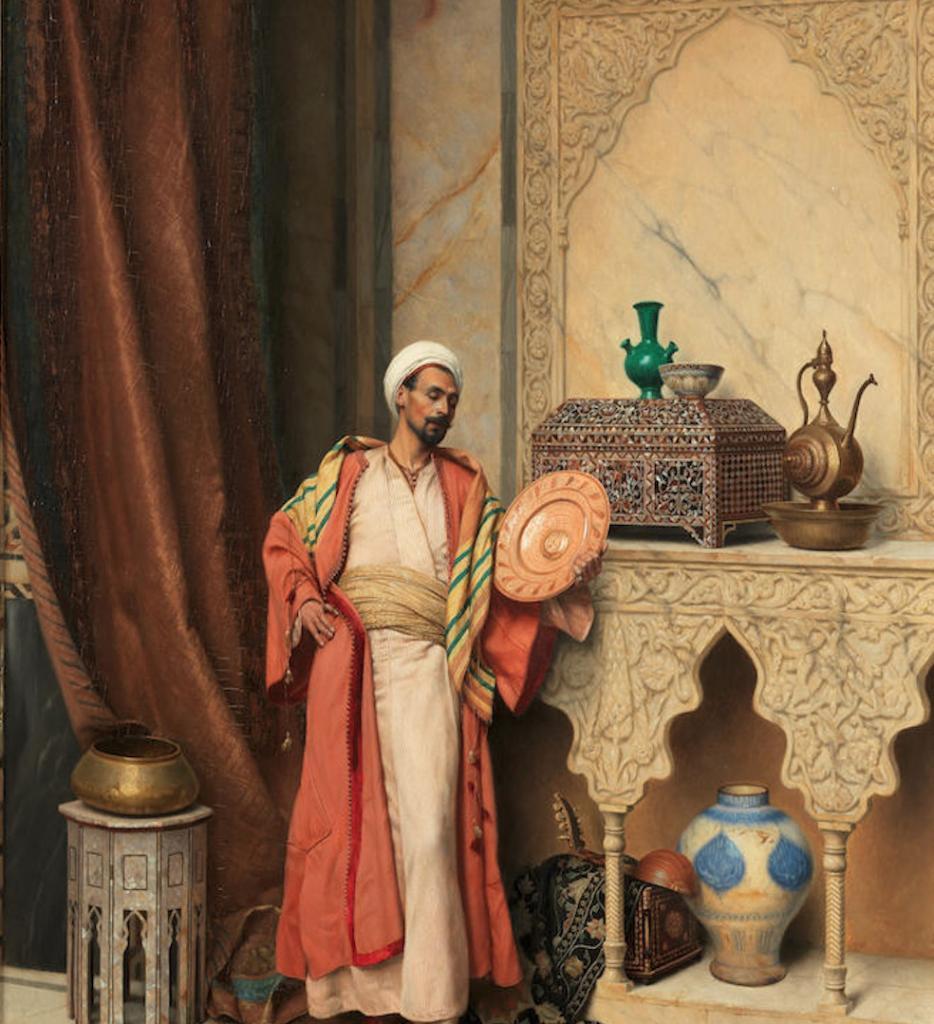

![Alphonse Etienne Dinet (French, 1861-1929) Rabiâ el Kouloub ou Le Printemps des coeurs, Légendes sahariennes recueillies par Sliman-Ben-Ibrahim, traduites et illustrées par E. Dinet, [Piazza] L'Edition d'art, 1902 £ 130,000 - 150,000 € 140,000 - 170,000 © Bonhams 19th Century European, Victorian & British Impressionist Art 26 Sep 2019, 14:00 BST London, New Bond Street](https://www.artskop.com/wp-content/uploads/2019/08/Alphonse-Dinet-vente-Bonhams-London-Artskop3437.jpg)
